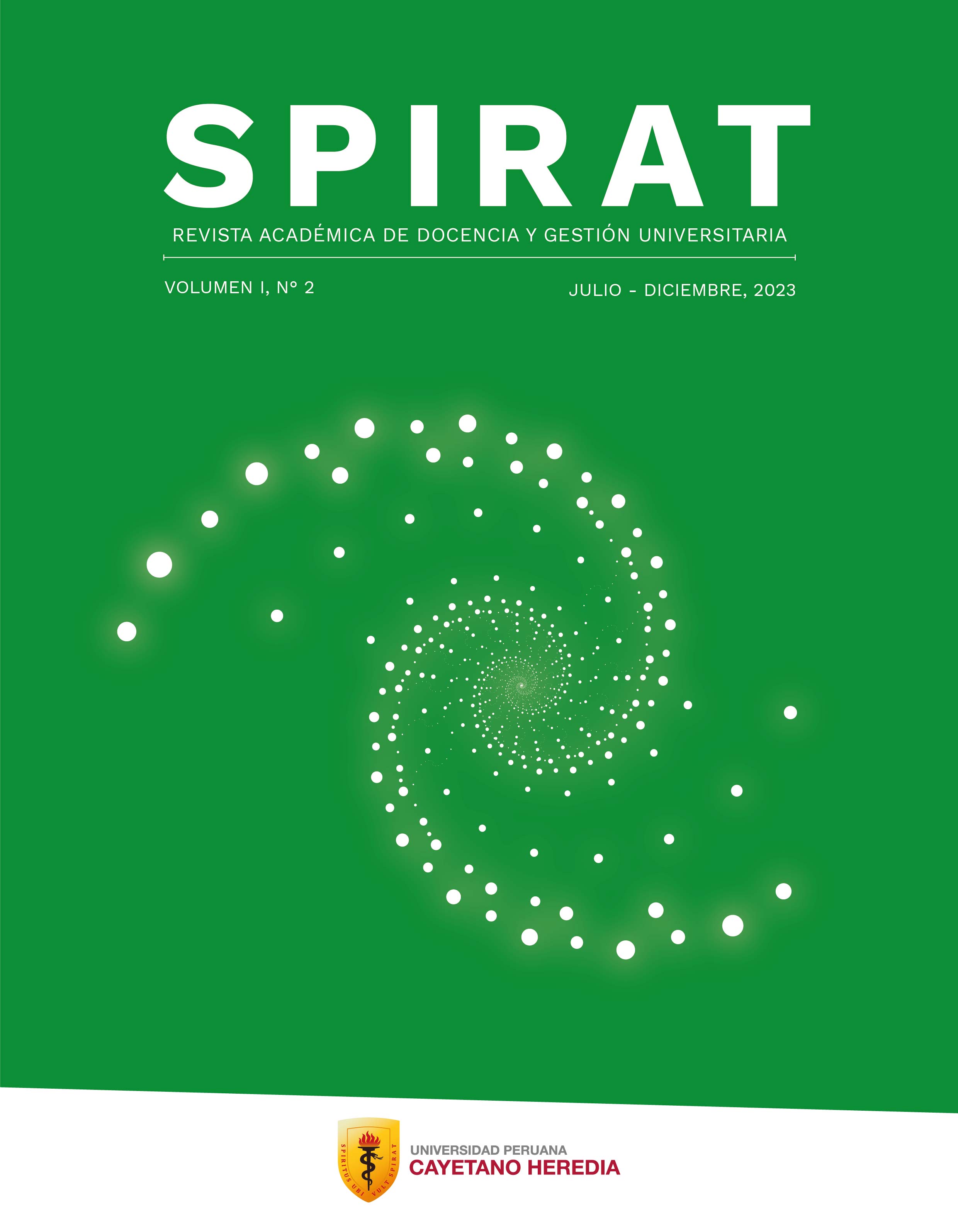Aproximaciones para comprender y prevenir la violencia obstétrica
Resumen
Objetivo: presentar un análisis crítico de la literatura que aborda el surgimiento de la violencia obstétrica como concepto y sus características; enfatizando los aportes que ofrece para repensar los estudios y las prácticas del cuidado obstétrico e identificar oportunidades de intervención para prevenirla desde el ámbito académico de docencia e investigación. Análisis central del tema: La definición de la violencia obstétrica se viene gestando desde inicios de 1980 cuando las iniciativas feministas y de mujeres en Sudamérica comenzaron a recoger; y en confluencia con las ciencias sociales, a investigar sistemáticamente los testimonios sobre la experiencia de las mujeres, describiendo explícitamente los partos institucionales como una experiencia violenta; las perspectivas del personal de salud y las distintas causas. Mientras que en alianzas, con parteras, doulas, y obstetras, impulsaron el movimiento por el parto humanizado o parto respetado. Aporte: El uso del concepto de violencia obstétrica permite no solo vigilar y sancionar a quienes corresponda; sino en que nos da la oportunidad y responsabilidad de repensar y modificar la propia formación y práctica médica, los procedimientos y procesos de atención y las relaciones e interacciones entre personal de salud y pacientes en el sistema de salud; entre hombres y mujeres en la sociedad.
Referencias
Referencias
(1) Freedman LP, Kujawski SA, Mbuyita S, Kuwawenaruwa A, Kruk ME, Ramsey K, et al. Eye of the beholder? Observation versus self-report in the measurement of disrespect and abuse during facility-based childbirth. Reprod Health Matters [Internet]. 27 de agosto de 2018;26(53):107-22. Disponible en: https://doi.org/10.1080/09688080.2018.1502024
(2) Dutton J, Knight L. Reproducing neglect in the place of care: Normalised violence within Cape Town Midwifery Obstetric Units. Agenda [Internet]. 2 de enero de 2020;34(1):14-22. Disponible en: https://doi.org/10.1080/10130950.2019.1704481
(3) Klein MC, Sakala C, Simkin P, Davis-Floyd R, Rooks JP, Pincus J. Why do women go along with this stuff? Birth Berkeley Calif. septiembre de 2006;33(3):245-50.
(4) WHO. The prevention and elimination of disrespect and abuse during facility-based childbirth: WHO statement. [Internet]. 2014. Disponible en: https://apps.who.int/iris/handle/10665/134588
(5) Gobierno del Perú. “Plan Nacional Contra la Violencia de Género 2016- 2021”, DS N°008-2016-MIMP. Decreto Supremo N°008-2016-MIMP. jul 26, 2016.
(6) Ministerio de Salud. Norma Técnica No. 180-MINSA/DGIESP-2021 Para la prevención y eliminación de la violencia de género en los establecimientos de salud que brinden servicios de salud sexual y reproductiva. Norma técnica No. 180-MINSA/DGIESP-2021, RM 031-2022-MINSA ene 28, 2022.
(7) CLADEM. Silencio y Complicidad. Violencia contra las mujeres en los servicios ´públcos de salud en el Perú. Lima; 1998.
(8) Villarmea S, Olza I, Recio A. El parto es nuestro: El impacto de una asociación de usuarias en la reforma del sistema obstétrico de España. Dilemata [Internet]. 2015;7(18):157-83. Disponible en: https://dialnet.unirioja.es/servlet/articulo?codigo=5106942
(9) Diniz SG, Salgado H de O, Andrezzo HF de A, de Carvalho PGC, Carvalho PCA, Aguiar C de A, et al. Abuse and disrespect in childbirth care as a public health issue in Brazil: Origins, definitions, impacts on maternal health, and proposals for its prevention. J Hum Growth Dev. 2015;25(3):377-82.
(10) Pozzio MR. L a gineco - obst etricia en México : entre el “parto humanizado” y la violencia obstetrica. Rev Estud Fem. 2016;24(1):101-17.
(11) Vela G. Percepción de la paciente sobre la atención del parto humanizado en el Servicio de Centro Obstétrico del Instituto Nacional Materno Perinatal durante el periodo marzo-abril de 2015 [Internet] [Licenciatura en Obstetricia]. [Lima, Perú]: Universidad Nacional Mayor de San Marcos. Facultad de Medicina; 2015. Disponible en: https://cybertesis.unmsm.edu.pe/bitstream/handle/20.500.12672/4278/Vela_cg.pdf?sequence=1&isAllowed=y
(12) Biurrun-Garrido A, Goberna-Tricas J. La humanización del trabajo de parto: necesidad de definir el concepto. Revisión de la bibliografía. Matronas Prof. 2013;14(2):62-6.
(13) Silva A, Pantoja F, Millón Y, Hidalgo V, Stojanova J, Arancibia M, et al. Stakeholders’ perceptions of humanized birth practices and obstetric violence in Chile: A scoping review. Medwave. 21 de octubre de 2020;20(9):e8047.
(14) Davis DA. Obstetric Racism: The Racial Politics of Pregnancy, Labor, and Birthing. Med Anthropol [Internet]. 3 de octubre de 2019;38(7):560-73. Disponible en: https://doi.org/10.1080/01459740.2018.1549389
(15) Davis-Floyd R, Sargent C. The social production of authoritative knowledge in pregnancy and childbirth. Med Anthropol Q. junio de 1996;10(2):111-20.
(16) Davis-Floyd R. Culture and birth: the technocratic imperative. Birth Gaz. Winter de 1994;11(1):24-5.
(17) Ginsburg F, Rapp R. The politics of reproduction. Annu Rev Anthropol. 1991;20:311-43.
(18) Bourgeault I, Declercq E, Sandall J. Changing birth. Birth by Design: Pregnancy, Maternity Care and Midwifery in North America and Northern Europe. 2001. 51–69.
(19) Freedman LP. Shifting visions: «delegation» policies and the building of a «rights-based» approach to maternal mortality. J Am Med Womens Assoc 1972 [Internet]. enero de 2002;57(3):154-8. Disponible en: http://www.ncbi.nlm.nih.gov/pubmed/12146607
(20) Berer M. Repoliticising sexual and reproductive health and rights. Reprod Health Matters [Internet]. noviembre de 2011;19(38):4-10. Disponible en: http://www.ncbi.nlm.nih.gov/pubmed/22118137
(21) Physicians for Human Rights. Deadly Delays Maternal mortality in Peru. A rights-based approach to safe motherhood [Internet]. Revista peruana de población. 1993 ene p. 33-56. Report No.: 3. Disponible en: http://www.ncbi.nlm.nih.gov/pubmed/19597198
(22) Barragués Fernández A. Accountability for sexual and reproductive health and rights in development practice: building synergies. Sex Reprod Health Matters [Internet]. 1 de enero de 2020;28(1):1848399. Disponible en: https://doi.org/10.1080/26410397.2020.1848399
(23) Grilo Diniz CS, Rattner D, Lucas d’Oliveira AFP, de Aguiar JM, Niy DY. Disrespect and abuse in childbirth in Brazil: social activism, public policies and providers’ training. Reprod Health Matters [Internet]. 27 de agosto de 2018;26(53):19-35. Disponible en: https://doi.org/10.1080/09688080.2018.1502019
(24) Samuel J. Struggling with the State:Rights-based Governance of Reproductive Health Services in Puno, Peru [Doctor of Philosophy]. University of Toronto; 2015.
(25) Austveg B. Perpetuating power: some reasons why reproductive health has stalled. Reprod Health Matters. 2011;19(38):26-34.
(26) Dahan O, Cohen Shabot S. Not just mechanical birthing bodies: articulating the impact of imbalanced power relationships in the birth arena on women’s subjectivity, agency, and consciousness. Mind Cult Act [Internet]. 2022;29(3):256-68. Disponible en: https://doi.org/10.1080/10749039.2022.2110262
(27) Davis-Floyd R, Davis E. Intuition as authoritative knowledge in midwifery and homebirth. Med Anthropol Q. junio de 1996;10(2):237-69.
(28) Löwy I, Sanabria E. A biomedicalização de corpos brasileiros: Perspectivas antropológicas. Hist Cienc Saude - Manguinhos. 2016;23(1):14-6.
(29) Lossio J, Iguiñiz-Romero R, Robledo P. For the good of the nation: scientific discourses endorsing the medicalization of childbirth in Peru, 1900-1940. Hist Cienc Saude--Manguinhos. diciembre de 2018;25(4):943-57.
(30) Guerra-Reyes L. Changing birth in the Andes: Safe motherhood, culture and policy in Peru. Diss Abstr Int Sect Humanit Soc Sci [Internet]. 2014;75(3-A(E)):No Pagination Specified. Disponible en: http://ovidsp.ovid.com/ovidweb.cgi?T=JS&CSC=Y&NEWS=N&PAGE=fulltext&D=psyc11&AN=2014-99170-498
(31) Strong AE, White TL. Re-examining Norms of Disrespect and Abuse in the Second Stage of Labor in Tanzanian Maternity Care. Med Anthropol [Internet]. 19 de mayo de 2021;40(4):307-21. Disponible en: https://doi.org/10.1080/01459740.2021.1884075
(32) Madhiwalla N, Ghoshal R, Mavani P, Roy N. Identifying disrespect and abuse in organisational culture: a study of two hospitals in Mumbai, India. Reprod Health Matters. 2018;26(53):36-47.
(33) Liese KL, Davis-Floyd R, Stewart K, Cheyney M. Obstetric iatrogenesis in the United States: the spectrum of unintentional harm, disrespect, violence, and abuse. Anthropol Med [Internet]. 3 de abril de 2021;28(2):188-204. Disponible en: https://doi.org/10.1080/13648470.2021.1938510
(34) Sadler M, Santos MJ, Ruiz-Berd??n D, Rojas GL, Skoko E, Gillen P, et al. Moving beyond disrespect and abuse: addressing the structural dimensions of obstetric violence. Reprod Health Matters [Internet]. 2016;24(47):47-55. Disponible en: http://dx.doi.org/10.1016/j.rhm.2016.04.002
(35) Castro A, Savage V. Obstetric Violence as Reproductive Governance in the Dominican Republic.Med Anthropol [Internet]. 17 de febrero de 2019 [citado 21 de febrero de 2023];38(2):123-36. Disponible en: https://www.tandfonline.com/doi/full/10.1080/01459740.2018.1512984
(36) Bohren MA, Vogel JP, Hunter EC, Lutsiv O, Makh SK, Souza JP, et al. The Mistreatment of Women during Childbirth in Health Facilities Globally: A Mixed-Methods Systematic Review. PLoS Med.2015;12(6):1-32.
(37) Diaz-Tello F. Invisible wounds: obstetric violence in the United States. Reprod Health Matters [Internet]. 2016;24(47):56-64. Disponible en: http://dx.doi.org/10.1016/j.rhm.2016.04.004
(38) Goncalves da silva Mi, y otros. Violencia obstetrica na visao de enfermeiras obstetras. Rev Rede Enferm Nordeste. 2014;15(4):720-8.
(39) Chattopadhyay S, Mishra A, Jacob S. ‘Safe’, yet violent? Women’s experiences with obstetric violence during hospital births in rural Northeast India. Cult Health Sex [Internet]. 3 de julio de 2018;20(7):815-29. Disponible en: https://doi.org/10.1080/13691058.2017.1384572
(40) Maya ET, Adu-Bonsaffoh K, Dako-Gyeke P, Badzi C, Vogel JP, Bohren MA, et al. Women’s perspectives of mistreatment during childbirth at health facilities in Ghana: findings from a qualitative study. Reprod Health Matters [Internet]. 2018;26(53):70-87. Disponible en: https://doi.org/10.1080/09688080.2018.1502020
(41) Terán DP, Castellanos C, González Blanco M, Ramos D. Violencia obstétrica: percepción de las usuarias. Rev Obstet Ginecol Venez. 2013;7373(33):171-80.
(42) Martínez-Galiano JM, Rodríguez-Almagro J, Rubio-Álvarez A, Ortiz-Esquinas I, Ballesta-Castillejos A, Hernández-Martínez A. Obstetric Violence from a Midwife Perspective. Int J Environ Res PublicHealth. 2023;20(6).
(43) Gray T, Mohan S, Lindow S, Farrell T. Obstetric violence: Clinical staff perceptions from a video of simulated practice. Eur J Obstet Gynecol Reprod Biol X [Internet]. 2019;1:100007. Disponible en: https://doi.org/10.1016/j.eurox.2019.100007
(44) Faneite, J; Feo A, Toro J. Grado de conocimiento de violencia obstétrica por el personal de salud. Rev Obstet Ginecol Venezuela. 2012;72(1):4-12.
(45) Vacaflor CH. Obstetric violence: a new framework for identifying challenges to maternal healthcare in Argentina. Reprod Health Matters. 2016;24(47):65-73.
(46) Castrillo B. Dime quién lo define y te diré si es violento Reflexiones sobre la violencia obstétrica. Sex Salud Soc Rev Latinoam. 2016;24.
(47) Laako H. Los derechos humanos en los movimientos sociales: el caso de las parteras autónomas en México. Rev Mex Cienc Políticas Sociales. LXI(227 mayo-agosto):167-194.
(48) Davis-Floyd R. La partera profesional: articulating identity and cultural space for a new kind of midwife in Mexico. Med Anthropol. 2001;20(2-3):185-243.
(49) Lokugamage AU, Pathberiya SDC. Human rights in childbirth, narratives and restorative justice: a review. Reprod Health. 2 de febrero de 2017;14(1):17.
(50) Diniz CSG, Bussadori JC de C, Lemes LB, Moisés ECD, Prado CA de C, McCourt C. A change laboratory for maternity care in Brazil: Pilot implementation of Mother Baby Friendly Birthing Initiative. Med Teach [Internet]. 2 de enero de 2021;43(1):19-26. Disponible en: https://doi.org/10.1080/0142159X.2020.1791319
(51) Gina Lyset Ayala Gutierrez. Calidad de la atención del parto según percepción de las usuarias en el servicio de centro obstétrico en el Instituto Nacional Materno Perinatal. Enero-Febrero 2015. 2015;1-47. Disponible en: http://cybertesis.unmsm.edu.pe/bitstream/cybertesis/4059/1/Ayala_gg.pdf
(52) Jardim DMB, Modena CM. Obstetric violence in the daily routine of care and its characteristics. Rev Lat Am Enfermagem. 2018;26:e3069.
(53) Savage V, Castro A. Measuring mistreatment of women during childbirth: a review of terminology and methodological approaches. Reprod Health. 26 de octubre de 2017;14(1):138.
(54) Fernández Guillén F. ¿Qué es la violencia obstétrica? Algunos aspectos sociales, éticos y jurídicos. Dilemata [Internet]. 2015;7(8):113-28. Disponible en: https://dialnet.unirioja.es/servlet/articulo?codigo=5106937Rev. Spirat. 2023;1(2): 43-53.
(55) Silva A, Pantoja F, Millón Y, Hidalgo V, Stojanova J, Arancibia M, et al. Percepción de actores involucrados acerca del parto humanizado y la violencia obstétrica en Chile: una revisión panorámica. Medwave. 2020;20(9):e8047.
(56) Ravaldi C, Skoko E, Battisti A, Cericco M, Vannacci A. Abuse and disrespect in childbirth assistance in Italy: A community-based survey. Eur J Obstet Gynecol Reprod Biol [Internet]. 1 de mayo de 2018;224:208-9. Disponible en: https://www.sciencedirect.com/science/article/pii/S0301211518301532
(57) Annborn A, Finnbogadóttir HR. Obstetric violence a qualitative interview study. Midwifery [Internet]. 1 de febrero de 2022;105:103212. Disponible en: https://www.sciencedirect.com/science/article/pii/S0266613821002874



1.png)



